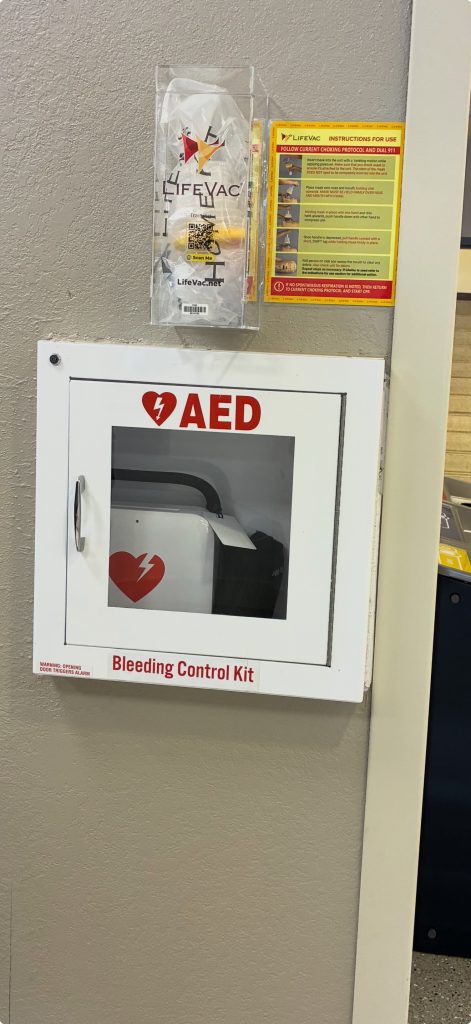To provide a safer environment, emergency life-saving equipment is stored in most buildings on campus. These life-saving assets include automated external defibrillators (AEDs), bleeding control kits, and naloxone, also known as Narcan. The Office of Environmental Health and Safety (EHS) has the responsibility of purchasing, management, and oversight of these devices, and provide continuity and consistency across campus in their installation, maintenance, and use.
Automated External Defibrillator (AED)
EHS is responsible for providing guidance, monitoring, and the periodic evaluation of the AED program. EHS also provides oversight and technical assistance in the purchase and maintenance of the University inventory of AEDs and their locations, routine inspection and service, and acts as a liaison between the University and manufacturers to assist with AED maintenance and compliance issues.
Usage
In the event an AED is utilized, UAPD must notify EHS immediately at 205-348-5905. Following usage, EHS will work to ensure that the AED is in proper working order, supplies checked and replenished as appropriate, clean and disinfect the AED, and return the AED to its designated location.
Stop the Bleed
The University of Alabama has implemented a Stop the Bleed program through making Bleeding Control Kits available throughout campus. These kits are contained within designated AED cabinets. AED cabinets that contain a Bleeding Control Kit are marked on the outside of the cabinet with a visible sticker.
exclamationNOTE:
Bleeding Control Kits are not intended to be a substitute for traditional first aid kits. They are meant for use in emergency situations where life-threatening bleeding is occurring and first responders are not immediately available. UAPD should ALWAYS be notified when a Bleeding Control Kit has been used at 205-348-5454 or 911.
Narcan (Naloxone)
The University is committed to maintaining a safe, substance-free campus for all employees, students, and visitors.
The University provides Narcan, a form of Naloxone, in the automated external defibrillator (AED) cabinets on campus to assist in emergencies.
The Office of Environmental Health and Safety (EHS) has primary oversight of the Naloxone program. It is responsible for implementing and managing the acquisition, distribution, transportation, storage, and maintenance of Narcan at the University. The implementation of the Naloxone program at the University and related training does not create a duty to act on behalf of the trained individuals. Separately, some employees may be subject to a duty to render aid by virtue of their professional roles.
exclamationNOTE:
If an opioid overdose is suspected, call 911 immediately before administering Narcan. Follow the instructions inside the Narcan kit or scan the QR code located on both the inside of the kit and the AED cabinet. The QR code links to the Administration of Narcan/naloxone on this page, which provides step-by-step instructions.
Instructional Videos
Save a Life Training (S.A.L.T)
The University provides training on the use bleeding control kits, AED usage, and CPR. This class was designed as a 2-hour course for individuals with little to no medical training to teach the skills needed to help respond to and deliver life-saving care to someone in need before emergency services arrive.
For more information on S.A.L.T, call 205-535-8909 or email Travis Parker at teparker2@ua.edu.
Additional information concerning AEDs and Stop the Bleed can be found on the Office of Emergency Management website.
